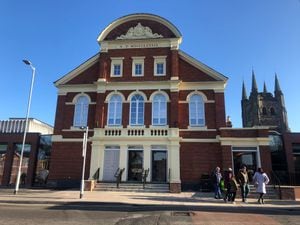The regeneration of Birmingham's canalside
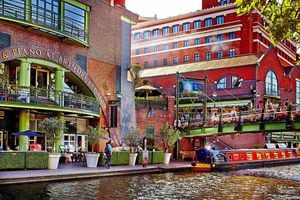
The second city had ambitions of punching its weight with the best in Europe – but the historic waterway network that was once its crowning glory had become an embarrassment.
However the advent of the 1990s signalled a new era for Birmingham, with civic bosses having the vision to transform the city into a hub of shopping, leisure and nightlife.
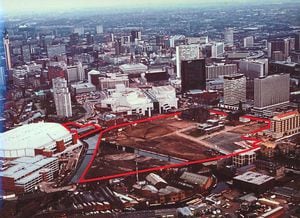
And crucial to this was the 17 acres of Brindleyplace, which is now celebrating its 20th anniversary. The land around Gas Street Basin was a sorry sight at the turn of the 90s, cluttered by old industrial units that had stood empty for years.
Symphony Hall and the International Convention Centre were first to rise from the ground and rows of bustling restaurants and bars along with towering office blocks soon followed.
Now Brindleyplace brings more than four million visitors to Birmingham every year and is home to 10,000 workers. It is a hive of entertainment with pubs, clubs, restaurants and offices with the ICC next door, and the Barclaycard Arena and the Sea Life Centre.
Walk across the bridge from the ICC on a summer's evening, and the seating areas outside its bars are guaranteed to be teeming with people of all ages. And its success has shown other places what can be achieved with towns like Walsall following suit with smaller scale waterside developments of their own.
The site is named in honour of the renowned 18th century canal engineer James Brindley and was originally occupied by factories at the height of Birmingham's industrial period, but lay derelict for decades following the decline of manufacturing in the region.
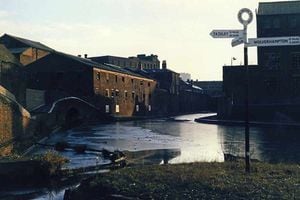
Having risen from the doldrums of the recession, it now draws in 10,000 visitors a day, with events including the popular Dragonboat Festival, live music in The Water's Edge bandstand and in Oozells Square, and festivals of film and food. Produce markets are also held on the last Friday of every month from May to August.
It is also one of the main venues for the world famous Jazz Festival that attracts the genre's top stars every July, while the Ikon Gallery is renowned for its displays of modern art. Deustche Bank moved in last year along with 2,000 staff, but other big name tenants are Lloyds, Bilfinger GVA, RBS, Deloitte and Michael Page International.
Bars and restaurants include Thai Edge, Bank, Le Monde, Pitcher and Piano, All Bar One, Pizza Express, Carluccio's, Baguette du Monde, Costa Coffee, Cafe Nero and Cafe Rouge.
Blueprints for todays's successful leisure quarter date back to 1987 when Birmingham City Council invited developers to come up with ideas for the land across the canal from the ICC and Symphony Hall.
For more information on attractions in and around Birmingham click here.
At the time the land off Brunswick Street was leased to a consortium of three companies – Merlin, Shearwater and Laing (MSL) who announced ambitious plans to create a 'huge leisure and entertainment area'.
Merlin pulled out, but by1991 plans for a £250 million shopping, leisure and office complex were announced by the developers. More than 850,000 sq ft was set aside for office buildings that would attract new companies to Birmingham. The development also featured the renovation of the Grade II listed Oozells Street school, which dates from 1877.
At this point landscaping of the pedestrian walkways and canal towpaths was already under way.
The city council gave the green light in July 1992 allowing the development to be created in phases over the following decade.
But the project hit another snag when ecologists discovered the site was home to the very rare Black Redstart bird, meaning no work was able to begin until the birds migrated.

A change in ownership came in June 1993 when the Argent Group bought Brindleyplace for an undisclosed sum. Preparation work finally begun on September 6, 1993 and the building project itself was launched on September 29.
The first part of the development to be completed was The Water's Edge – a canalside scheme of shops, restaurants and bars.
One Brindleyplace, a five-storey office building was opened in 1995.
Work continued until 2009 with the opening of 11 Brindleyplace. It was designed by award-winning architect Glenn Howells and in
1998 the development was recognised with a special award at the Midlands Property Show for its contribution to the city's regeneration.
At that stage just over half the development had been completed and further construction was well under way on 250,000 sq ft of office space and a second new public square. But the signs that the city was onto a winner were already clear as it was welcoming more one million visitors a year. Brindleyplace is now an established landmark, along with the new Bullring, Grand Central and New Street Station and the Mailbox. And its canals are an integral part, harking back to Birmingham's past.
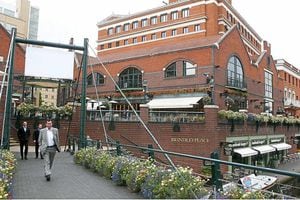
Though Brindleyplace bosses are celebrating the landmark anniversary, they insist they want to keep expanding and increasing the number of visitors. Alison McKenna, senior marketing executive at the complex, said: "Brindleyplace continues to thrive as both a business and leisure destination. Last Christmas we had a record number of people visiting, increasing by 11 per cent from last year. It really is incredible to think just how much Brindleyplace has transformed an area that once lay derelict and unused."
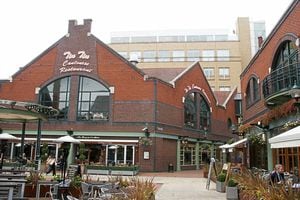
And the people who work and socialise there are looking forward to seeing what the future holds. Miles Drew, now works as a consultant at the Royal Town Planning Institute in Brindleyplace, and his memories of the area reached the final of a competition organised by bosses to celebrate the 20th anniversary.
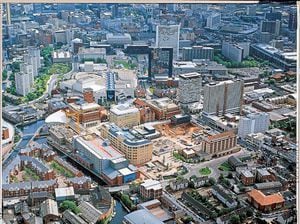
He said: "I sometimes feel watching that construction had such an impact on me that it led me to my interest in town planning. It now seems very appropriate that I work on the estate as a town planning consultant advising developers on many exciting projects."
The winner of the competition was Linda Guest, 58, who remembers being inspired by another mother she chatted to by the fountains in Central Square, who was taking a degree. And 10 years later she collected her own degree at Symphony Hall and celebrating at Brindleyplace.
Her memories were published on the Brindleyplace website and put on posters around the site. Among the 20th anniversary celebrations this year has been an annual dragonboat race featuring 20 teams battling it out.





